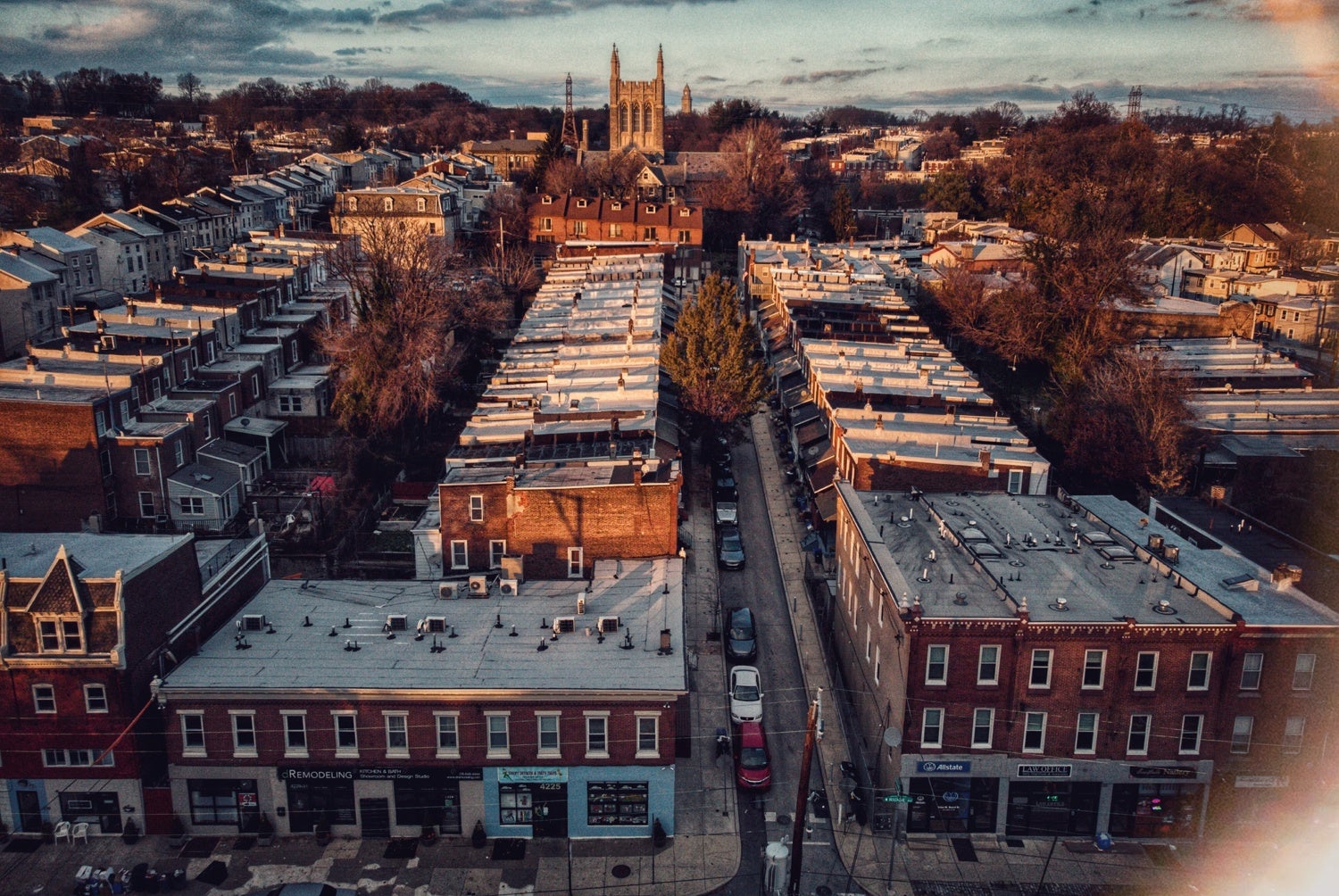
When Americans move house, they typically don’t go too far. In 2017, 62% of movers not only stayed in the same state, but never made it out of the county. What’s more, last year only 5.5% of homeowners moved at all (compared to 21.7% of renters). What appears to be a general reluctance to uproot our lives is a reflection of just how hard moving can be, especially when it’s long distance or across state lines. Sometimes, however, you find yourself with a for-sale sign in the yard and your bags packed for a permanent trip to a faraway destination. Whether you’re chasing after a job in a different city or the warm Florida sunshine, use this moving to a new state checklist to cover all your bases and make a strange place instantly feel like home. Partner up with local real estate agents—one in your current city, and one in the place where you’re headed. Take a trip in advance of the move to scout things out. Get the lay of the land using Google Maps. Solidify your moving plans to get from A to B. Set up utilities with your new local provider. Officially change your address with the post office. Figure out your partial-year state taxes. Cancel ongoing services and subscriptions. Transfer your local bank account. Update your homeowners and vehicle insurance. Obtain a copy of your medical records. Research medical professionals and nearby hospitals. Get a new license and change your vehicle registration. Start making new connections through social networks and local apps. Now let’s breakdown each checklist item one by one so you can immediately start getting acclimated. An interstate move creates pressure to sell your house fast, especially in the event of a job transfer or life event like divorce. These situations come with a certain level of chaos, and you don’t want to get stuck trying to market your home from afar or juggling housing costs in multiple places. So to speed things along, it’s a good idea to partner up with a local real estate agent with a proven track record of selling homes at a fast clip. You’ll want to check the agent’s average days on market, total number of home sales, average sale price, years of experience, and how they’ve done selling properties similar to yours in your neighborhood. Meanwhile, a buyer’s agent on the ground in your new city is not only going to help you find that next place to call home, but they can also be a great source of local knowledge. Christie Cannon, who has helped scores of new homeowners relocate in her market of Frisco, Texas, explains how it’s her job to know the city like the back of her hand and help her clients get familiar with it, too. Ask your agent about anything—property taxes, traffic patterns, coffee shops, walking trails, shops, restaurants, and top local attractions. Not sure where to start your agent search? You can use HomeLight’s real estate agent matching engine to compare all of the top selling and hyperlocal real estate experts in your city and even drill down into specific neighborhoods. If it’s logistically possible, hop in the car or book a flight to your destination city before you make the move official. Make it a point to talk to anyone who lives or has lived there before about what they’d recommend you try to test out living like the locals do. Ask them for suggestions on the best places to eat, weekend activities, and what different parts of town have to offer. Put a call out on Facebook to broaden your recommendation crowdsourcing. Based on your conversations and the responses you get, create an itinerary for your trip and try to stay for at least a week. You could even stay in an Airbnb (or split up your stay in different areas) to get a feel for living like a true resident. Enjoy the sights and experience, but don’t treat the trip like a lazy vacation. You’re here on research! Since you can’t possibly get the full rundown on a place with one trip alone, Google Maps’ Street View tool is a great way to virtually explore your new ‘hood from just about any angle without leaving your desk. Type in the city and state, then use the zoom feature to drill down and familiarize yourself with your new town’s landmarks, major streets, local stores and shops, restaurants, gyms, and public transportation system. If you have a general idea of where everything is when you arrive, it’ll make you feel just a little bit more at home from the start. About 3 million American households move across state lines every year. Given that the average interstate move costs $4,300, most of these interstate movers opt to tackle the daunting challenge of moving without professional help. If you choose to go the DIY route to keep moving expenses down, start by getting all the supplies you need to making moving easier with one trip to the hardware store, then fill in the gaps with our comprehensive moving supplies checklist. On the other hand, if a big move across state lines feels like an impossible task to face alone, you want to compare long-distance moving companies carefully to avoid working with movers who take forever, show up late, or fail to communicate with you while your delicate valuables make the dangerous trip from Chicago to Tampa. “We do have a few moving companies we recommend, and they are the major, big box companies,” says Cannon, the Texas agent. “We don’t recommend anyone who is not highly insured, highly reputable, and been around for a substantially long time.” American Van Lines Vice President Andy Kroll, who has over 20 years of experience in long-distance moves, suggests getting at least 3 price quotes from different movers. All the quotes should land around the same price—if one is significantly cheaper than the rest, then that is a red flag. Aside from comparing pricing, you also need to ask each moving company about the services included with the base costs as well as their fee structure. Be sure to ask: All these things impact the bottom line of your move, so it’s important to price out your options to make an informed decision about who you hire. Your current utility providers may not provide service in the state you’re moving to, so you need to do a little digging into your available providers beforehand. The most tried-and-true method of finding your new utility providers is to simply do a Google search, though many city and state websites have this information as well. Most cities provide local services such as trash, recycling, water, sewer, and garbage pickup. The gas, hydro, or electricity services are often provided on a state level, too, which means you can visit www.usa.gov to find a state’s official website. Or, you can check here for electricity plans in Texas. Contact a new provider at least two weeks in advance of your move-in date. Many utility providers have a 3-5 day turnaround time so you should cushion the timing as much as possible so you aren’t without hot water your first week. If you’re moving during the summer, which is peak moving season, the wait to activate services may even be longer. Don’t forget to cancel your existing utility services by contacting your current providers and setting up shut off dates, too. First off you’ll need to change your address with the post office, which is accomplished by visiting USPS.com/move, but what about other important government agencies? You can use the SSA’s website to change your address online. If you receive Social Security disability, survivors, retirement benefits, or Medicare, then you’ll need to do this as soon as possible. If you don’t receive any kind of Social Security benefits, then you can change your address in person or by phone- all you need to do is contact the SSA. For tax refunds or other important mail related to your taxes, simply contact the IRS directly to change your address. If you’re not expecting anything from the IRS soon, then you can put your new address in the appropriate place the next time you file taxes. Exercise your right to vote in your state by contacting your new state election office to change your address. You’ll be assigned a polling place and be ready to go when the next election day rolls around! These address changes take around 7-10 days to process, so give yourself enough time before you move for them to take effect. Unless you plan to move on January 1st to your new state, chances are you need to figure out partial-year state taxes for the state you moved from and to. Most states have tax forms specifically for residents who only lived in the state for part of the year (usually denoted by “PY” on the form), so check with both your former and current state tax authority’s website to find out which form you need. If your income is about the same each month, you can get a ballpark estimate of the taxes you will owe in each state by simply allocating the income you earned in the month and weeks you lived in each state during the year. In the chaos of organizing, packing, and arranging, it’s easy for the little things to slip your mind. That’s why it’s important to tie up any loose ends you may forget about later, such as: Recurring appointments
Cancel any recurring appointments on your calendar such as haircuts or dental cleanings.Gym memberships
It’ll be difficult to use your gym from another state, so cancel your membership. If it’s a national franchise, see about transferring your membership.Prescriptions
Have any prescriptions on autofill? Talk to your pharmacist or doctor about your move and make sure to remember to establish with a new provider where you move.Vet appointments
If you’ve got a furry friend in tow for your move, then make sure to cancel any existing appointments and to seek out a new vet for them, too. You must also check with the laws in your new city and state to see if you need to register Groucho Barks with the city. Get in touch with your local city or county licensing department to find out. If you’re using a local bank for any of your banking needs, then you need to find a new bank in the area you’re moving to and transfer your bank account. It depends on the institution, but note that transferring banks will likely require you to show up in person with a valid driver’s license from the state you want to open the bank account in. Use SavingsAccounts.com and Bankrate.com, plus check out reviews on MyBankTracker to help in your search for a new bank. Look for a vast ATM network that’s easily accessed, competitive interest rates, and an account that has a minimum balance you can maintain. When you buy a new house or rent a new apartment, you need to update your homeowners insurance or renters policies to your new address. Also, don’t forget about your car insurance or policies that cover recreational vehicles or motorcycles you may own, too. Vince Lefton, the CEO of Bulldog Adjusters in Florida with nearly 10 years of insurance experience, suggest a chat with your insurance agent before you move. “Moving out of state may mean a change of laws surrounding your insurance coverage, so it’s important to find out before your move what needs completed so your insurance is current,” says Lefton. Medical records are the last thing on your mind when you’re caught up in the chaos of relocating, but they’re something you need to keep track of nonetheless. Instead of trying to call your doctor’s office once you get settled, get your own copy of your medical records from your physician’s office before you leave town. It’s a good idea to get records from your family physician, dentist, and any other medical professional you regularly see so you can have the records in hand to provide them when you meet with your new care providers. Speaking of your medical records, it’s important to find new medical providers to give them to! The best place to start is with your current doctor. Ask them if they have any recommendations or advice for finding a qualified doctor where you’re moving to. Your insurance provider is also a good resource. Many health care providers have “Find a Doctor” features on their websites where you can read reviews and ensure they are in your provider network. Finally, the American Medical Association has a DoctorFinder tool you can use to locate licensed physicians. This tool provides information on licensed physicians as well as accepted insurance, education, and office hours. You also want to know exactly where the nearest hospital is in case of an emergency situation. Find out where it is and add the hospital’s address and phone number to your cellphone contacts. Moving is a complicated process, which is why you normally have a grace period to get a new license and vehicle registration after you move. This grace period varies by state, so make sure to consult the state’s DMV website to find out how long you have (usually between 30 and 90 days) and what documents you need to complete the transition. Once you have all your ducks in a row, head to the local registration office, often called the Department of Motor Vehicles or some variation, to apply for a new license and obtain a new vehicle registration. Upon completion, you’ll be fully registered to drive in your new home state! Once you’ve squared away all the details and unpacked the last box, it’s time to get settled in and start making new connections. This process can take time, but there are things you can do to try to speed it along. Let your smartphone help you lead the charge to find a new network of friends and interests in your new city. Download apps that will help you get to know your new area, such as: This app allows you to literally meet up with people who you share interests with. It’s not a dating app; it’s simply an app that allows you to connect with like-minded people and cultivate new friendships. Simply enter your ZIP code and a topic you wish to discuss with others. You can choose to join groups segregated by topic, where you can then network and, well, meet-up. This app allows you to get the inside scoop on local restaurants, bars, and cafes. The best part is locals give all the details, so you’re getting the opinions of people in the ‘hood who have actually experienced these locations. Explore local recommendations by entering your city, which grants you access to details only locals would know, such as which restaurants are cash only or places to get early because of limited seating space. Relocating is difficult, but with our moving to a new state checklist you can cross all your T’s and dot all your I’s to make moving just a little bit less painful. In fact, you’ll be so settled, people will mistake you for a long-time local!Here it is—your moving to a new state checklist
Partner up with local real estate agents—one in your current city, and one in the place where you’re headed.
Take a trip in advance of the move to scout things out.
Get the lay of the land using Google Maps.
Get your moving plans in order to plan out the journey from A to B.
Set up utilities with your new local provider.
Officially change your address with the post office.
Social Security Administration (SSA)
Internal Revenue Service (IRS)
State election offices
Figure out your partial-year state taxes.
Cancel ongoing services and subscriptions.
Transfer your local bank account to a new institution.
Update your homeowners and vehicle insurance.
Obtain a copy of your medical records
Research medical professionals and nearby hospitals
Get a new license and change your vehicle registration
Start making new connections through social networks and local apps
Meetup
Like a Local
Hey, you look familiar!



